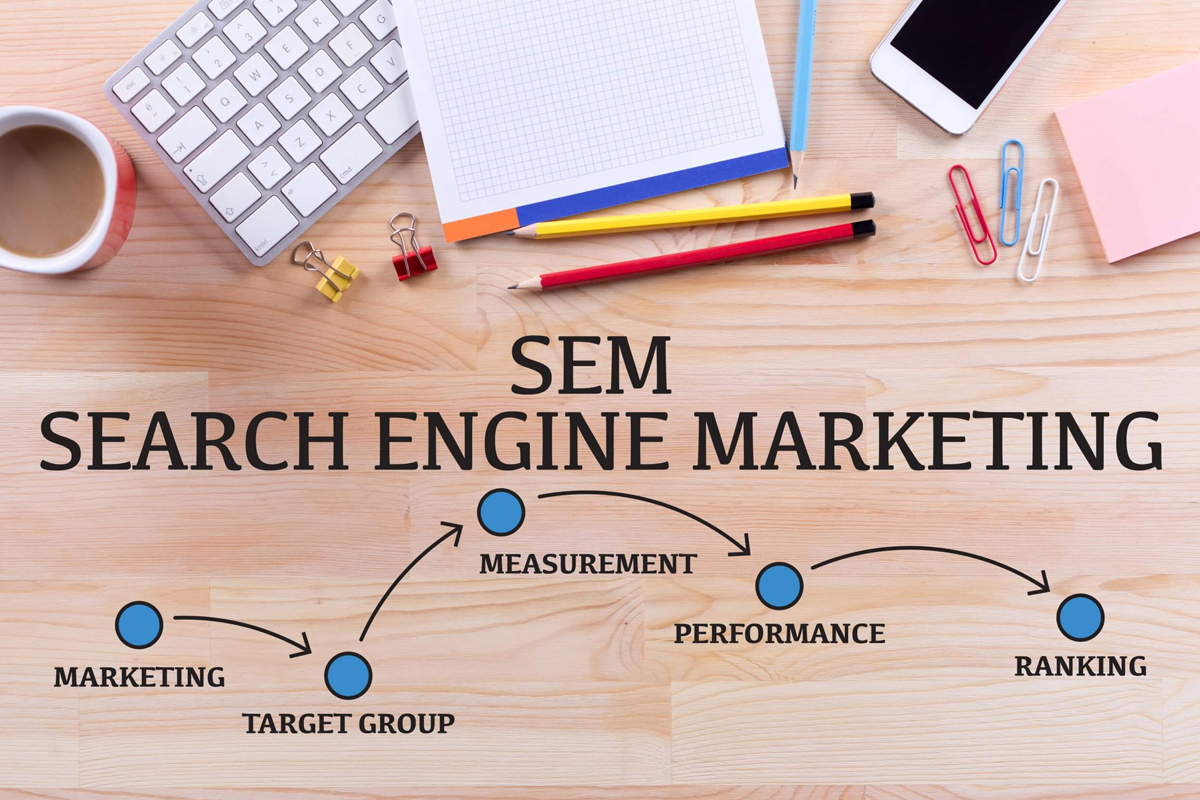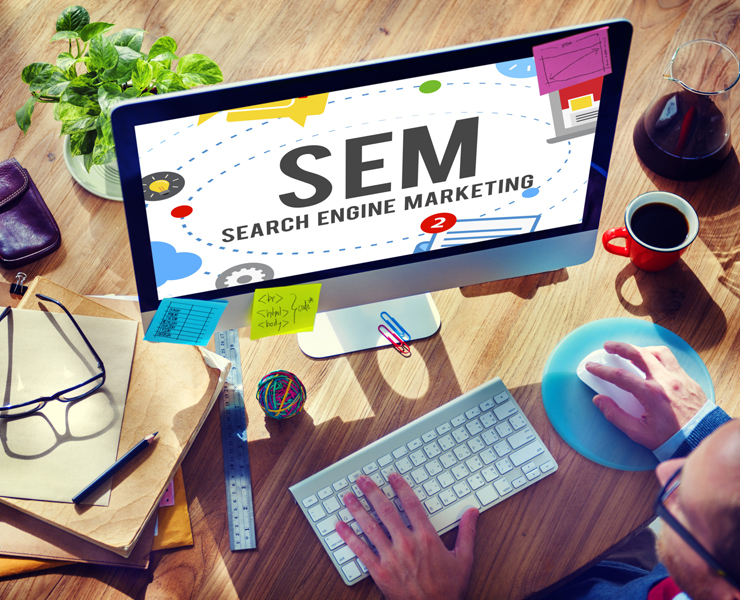
SEO vs. SEM: What’s the Difference?
Have you ever wondered what the difference is between SEO and SEM? If you’re not sure, you’re not alone.
Search engine optimization (SEO) and search engine marketing (SEM) are often confused with one another. While they both deal with improving your website's visibility in search engines, there are some key differences between the two. This article will explore those differences and give you a better understanding of how to use each one to improve your website's ranking. Having a clear understanding of these differences will also help you to avoid some common mistakes that can hurt your website's ranking.



Search Engine Optimization (SEO)
Search Engine Optimization, or SEO, is the process of improving the visibility and ranking of a website on search engines. By optimizing the content of a website, SEO can help to attract more visitors, resulting in increased traffic and potential customers. In addition to improving the quality of a website's content, SEO also involves making sure that the site is easy to navigate and understand for both users and search engine crawlers.
How It Works:
Several factors go into SEO, all of which work together to help improve a website's ranking. These include items such as the website's title, meta tags, header tags, and keywords. The content of the website itself is also important, as it should be relevant and keyword-rich. In addition, the website's structure and design can impact its ranking, as an easy-to-use and well-organized site are more likely to be popular with both users and search engines.
By following these best practices, businesses can improve their chances of appearing at the top of search engine results pages, resulting in more visitors and potential customers.
Types of SEO
When most people think of SEO, they think of on-page optimization. This type of optimization involves improving the content and structure of a website to make it more visible and relevant to search engines. However, there are two types of SEO: on-page and off-page. Let's take a look at the differences between these two types of optimizations.
A. On-Page SEO
Many people focus on optimizing their website for Google, but it's crucial to remember that your visitors are human beings, too. That's why on-page SEO is so important. On-page SEO is all about making sure your website is easy to read and navigate for both search engines and visitors. This includes things like using clear headings and subheadings, short paragraphs, and bullet points. It also means using keywords throughout your content so that both search engines and visitors can easily find what they're looking for. By taking the time to optimize your website for both users and search engines, you'll be able to attract more visitors and improve your search engine ranking.
B. Off-Page SEO
When it comes to search engine optimization (SEO), most people focus on on-page factors like keyword density and backlinks. However, there's another important component of SEO that often gets overlooked: off-page factors. Off-page SEO refers to the steps you take outside of your website to improve your search engine rankings. This can include everything from link building and social media engagement to content marketing and brand awareness.
By making a concerted effort to improve your off-page SEO, you can give your website a major boost in the search engine results pages (SERPs). As a result, you'll enjoy increased traffic, leads, and sales. So if you're not already focusing on off-page SEO, now is the time to start.
Measurement and Reporting
There are several ways to measure and report on SEO progress. The most common method is to use Google Analytics, which is a free tool that provides detailed statistics about website traffic and performance. Another popular method is to use a rank tracking tool like Moz or SERPWatcher. These tools allow you to track your website's position in the search engine results pages (SERPs) for specific keywords.
SEO reporting can be a complex and time-consuming task, but by tracking your progress and reporting on your results, you can make informed decisions about your SEO strategy and see how it's impacting your business.
Search Engine Marketing (SEM)
SEM is an online marketing strategy that helps to improve a website's visibility on search engine results pages (SERPs). SEM includes both paid and organic techniques, such as pay-per-click (PPC) advertising, search engine optimization (SEO), and content marketing. When used together, these strategies can help to increase web traffic, leads, and sales.
SEM is an important tool for any business with an online presence, as it can help to reach more potential customers and improve conversions. For best results, SEM should be incorporated into a comprehensive digital marketing strategy. However, even a basic SEM campaign can have a positive impact on a website's bottom line.
How It Works
As anyone who has ever tried to find something online knows, search engines are powerful tools. But what many people don't realize is that businesses can use search engines to their advantage with a little help from SEM. By using techniques like keyword research and optimization, businesses can ensure that their websites and ads appear prominently in search results when potential customers are looking for products or services that they offer.
In addition, SEM can also be used to target specific audiences with laser-like precision, making it an incredibly effective way of reaching new customers. With the help of SEM, businesses of all sizes can level the playing field and compete for attention in the digital age.
Types of SEM
There are many different types of SEM, and each has its strengths and weaknesses. One of the most popular types is pay-per-click (PPC) SEM. With PPC, you only pay when someone clicks on your ad, making it a great way to generate leads. However, PPC can be expensive, and it takes time to build up a successful campaign.
Another popular type of SEM is display advertising. With display ads, you create an ad that is shown on websites related to your product or service. This can be an effective way to reach your target audience, but it can be difficult to track results.
Finally, organic SEM is a type of SEM that relies on optimizing your website for search engines. This can be a long and complex process, but it can be very effective in driving traffic to your site.
Measurement And Reporting
SEM can be achieved through both paid and organic means. Paid SEM typically takes the form of advertising, such as pay-per-click (PPC) advertising, while organic SEM involves optimizing a site for the search engines so that it ranks higher in the SERP. To measure and report on the effectiveness of an SEM campaign, several metrics must be tracked, such as click-through rate (CTR), cost-per-click (CPC), and conversion rate. By tracking these metrics, marketers can gain insight into which aspects of their campaigns are performing well and which need improvement.
Difference Between SEO And SEM: Summary
Though they are similar, SEO and SEM are two different strategies used to improve visibility and draw traffic to your website. Search Engine Optimization (SEO) is the process of improving the ranking of your website on search engine results pages (SERPs). This is done by optimizing your website content so that it is relevant to the keywords that people are searching for.
In contrast, Search Engine Marketing (SEM) is a paid form of marketing where you can purchase advertising space on SERPs. This ensures that your website appears at the top of the results page when people search for certain keywords, giving you a better chance of being seen by potential customers. Though they are different approaches, both SEO and SEM can be effective in driving traffic to your website and growing your business.
